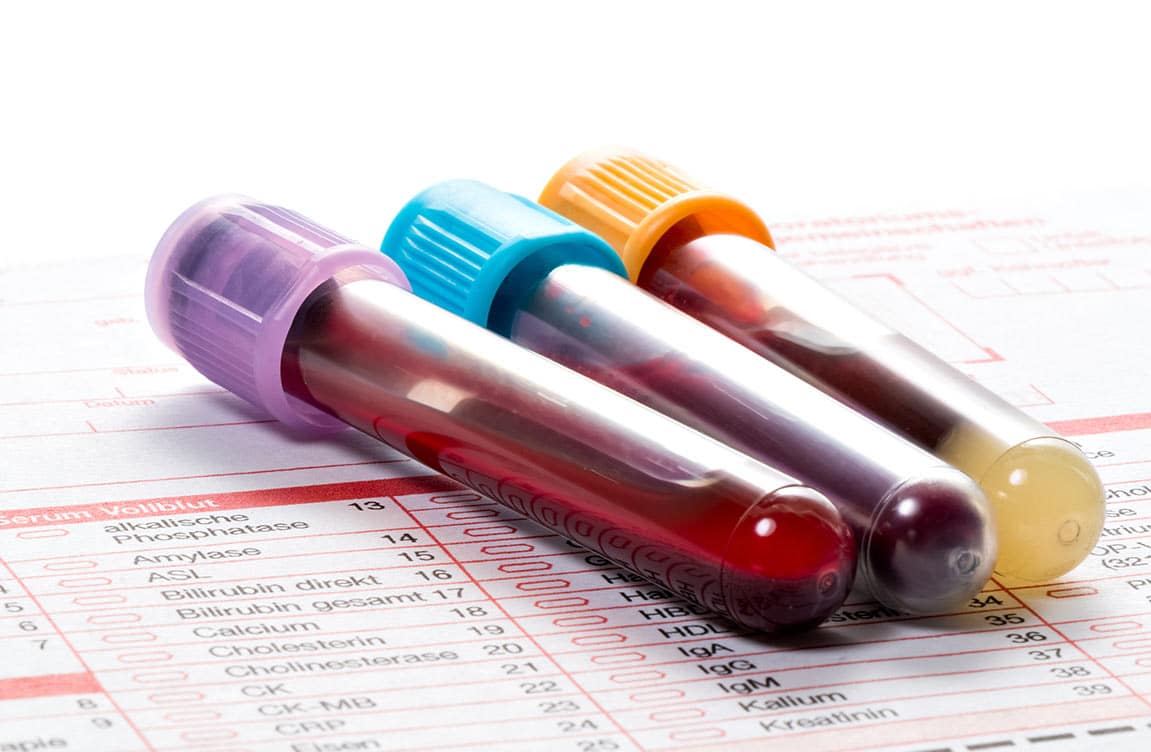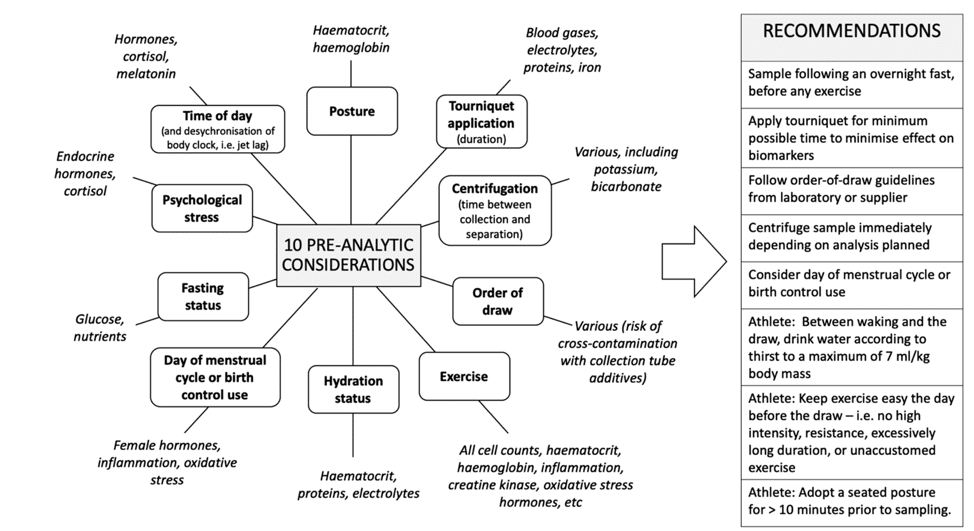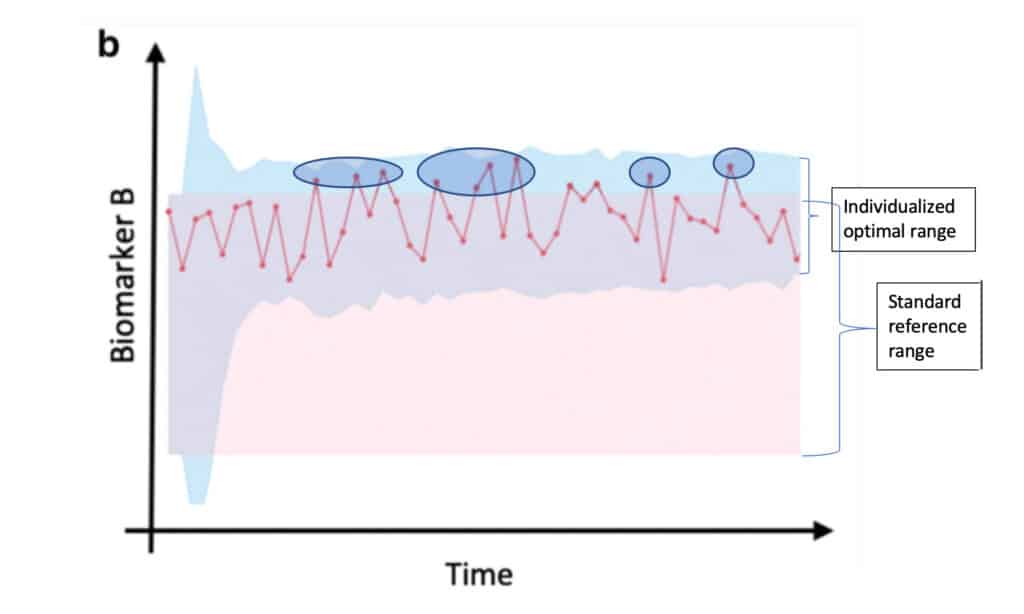
How to Use Blood Biomarkers to Inform Your Training
By Jason Koop,
Head Coach of CTS Ultrarunning
For many years I have retained a copy of Mosby’s Manual of Diagnostic and Laboratory Tests that I fully admit was ‘permanently borrowed’ from an old coaching colleague of me. It’s a medical reference manual that is far above my educational pedigree. It’ll as dull as dishwater, will never make Oprah’s Book Club, and will only hold even the heartiest of attention spans for a few minutes. Yet, over the course of my career, when athletes receive results from bloodwork I will always reach for this book, take a chug of coffee, and dive right to the dogeared pages to better inform my analysis.
Using blood biomarkers to inform training is becoming increasingly popular and accessible for athletes. What was once confined to elite athletes working with dedicated sports and health professionals is now becoming more commercialized. That’s mostly because it’s a lot easier than it used to be. In the old days, you had to schedule an appointment, go into the doctor’s office and have a phlebotomist stick a needle in your arm to draw a few tubes of blood. Now, that’s being replaced with on-demand appointments and home test kits requiring only a few drops of blood. Results of the blood draw were once coded into an unintelligible array of alphabet soup. Now they are shown with convenient red, yellow and green stoplights, all in an attempt to indicate if you are optimal, suboptimal or failing across any particular biomarker. There are even apps and consumer facing reports that are far more entertaining than my reference manual and include nifty infographics, practical recommendations and a heap of referenced literature to support the advice. You can even pair your results with direct-to-consumer genetic tests in order to gain further insight (or complication).
As convenient and appealing as these testing options have become, the training value for most athletes is much less straight forward. While you can derive informed training decisions from blood biomarker testing, it’s not quite as simple as a pin prick, send it to the lab, and voilà. If you are considering any of these options to inform your training, here’s how you should be thinking about it.
Bloodwork is complicated, bring in some help
When you have your blood drawn and analyzed, you are getting a snapshot of your internal biochemistry at a singular moment in time. The complicating factor with this approach is that your body’s biochemistry adapts across different time courses and it is difficult to interpret what is actually happening from a quick peek at a moment in time. Cortisol for example, which is used as a marker of overtraining (actually overused and relentlessly demonized, if you want my opinion) can fluctuate dramatically within minutes, even at rest, or due to your natural circadian rhythms. Your cumulative training stress also impacts cortisol release, even when measured after the exact same bout of exercise (Meeusen 2004). In other words, the time of day, overall training status, and both acute and chronic training responses can all affect your cortisol levels at the precise moment in time your blood is drawn. Yet, cortisol is commonly used to dichotomously determine if you are ‘overtrained’ or not.
On the other side of the response timeframe, biomarkers like reticulocyte count, hemoglobin mass and hematocrit (all biomarkers to indicate oxygen transport function) can take days or weeks to change. Iron supplementation or other dietary manipulations commonly used to improve these latter markers usually take several days or weeks to manifest in any meaningful result.
Using a single moment in time to represent a host of different biological activities is like extrapolating the weather from your friend’s Instagram feed. It can look perfect, bright and sunny at that particular moment in time (and it might very well be) but in reality, it was raining all morning and they tripped over a rock en route to capture the selfie. Yet, you’d never know because the before and after context is missing. Bloodwork is the same way. You are receiving an instantaneous look at your internal biochemistry, and without the proper context for what happened before and after the test the interpretation proves difficult.
Other factors can also complicate bloodwork. Your posture during the draw, hydration status, what you ate for breakfast, a stressful day at work, and a host of other ‘pre-analytic’ conditions can affect what ultimately shows up in the tube. A 2019 review article in the Journal of Sports Medicine outlines many of these considerations, as well as practical recommendations an athlete should undertake. If you are considering bloodwork, you should absolutely take the time and care to standardize all of these pre-test conditions to ensure consistency and derive higher quality meaning from the test. However, when I look at this from a practical level, thinking about a real person in a real life trying to regulate all of these conditions, and then try to determine if that athlete is ‘high, low or optimal’ across any of these biomarkers, I can’t help to come to the conclusion that ‘it’s complicated’.
Because it’s complicated, plan on bringing an expert into the mix for analysis. To date, I have yet to see a standardized report, app or algorithm that accurately contextualizes the results and then provides guidance stemming from any singular or series of blood draws for an athletic population (although this well done study demonstrates that it’s possible among a healthy population). The graphs, charts, stoplights are nice, but it still takes a human to incorporate context outside of the biochemical snapshot to evaluate and provide accurate recommendations.
Are you screening or monitoring?
Before you run off to your nearest lab to get a needle jammed in your arm, take a pause and consider why you want to monitor your bloodwork in the first place. Are you planning to use information from your bloodwork in an attempt to make decisions about your training (should I train more/less, etc.) and nutrition (do I have adequate iron stores)? Do you suspect a diseased state such as anemia or impaired hormone function? The answers to these questions will dictate how often and what types of markers you want to look for. And, there are two very divergent paths you can follow to find the right answers.
Bloodwork for Screening
Using blood biomarkers to screen for deficiencies or excesses is one of the simpler and more common ways to use bloodwork. It’s a blunt instrument, capable of informing on nutrients and other nutritional components, as well as diseased states such as anemia, kidney injury and severe cases of overtraining syndrome. Sampling is rather infrequent, on the order of once every few months. With athletes I work with, where we use bloodwork as a broad screen to inform, I prefer to screen every quarter on the same calendar day for men and every 3rd menses on the same day of the mensural cycle for women (provided that the training is similar in the days preceding the draw).
Screening for deficiencies in iron, Vitamin D, fatty acids, as well as for low energy availability (using a combination of leptin, Interleukin (IL)-6, ghrelin, tumor necrosis factor alpha and testosterone) can be particularly informative in many cases.
Bloodwork for Monitoring
Using bloodwork to monitor performance and adaptation is a whole different ballgame. It takes time, resources, and expertise to pull off correctly. And, if done correctly it can be used alongside (but not in place of) training information, such as day-to-day performance, load monitoring and subjective feedback to inform training. Bloodwork monitoring requires frequent, consistent testing every 3-10 days, depending on the test and parameters you are looking for.
In order for bloodwork monitoring to be effective, individual ranges need to be set for the biomarker in question using Bayesian statistical methods. In essence, you are using previous values across long periods of time to create optimal individualized ranges for any particular marker. As a result, you eschew the traditional reference ranges and replace them with individualized ranges. While complicated, creating these individual ranges is necessary because the standard reference ranges are based on population-based data (i.e. NOT athletes) and are usually overly broad for a performance context. As an example, the figure below represents longitudinal testing across a generic ‘biomarker B’ with individual points represented by the red dots, the standard reference range (which will be denoted on any standard blood test) indicated by the pink shading, and the individualized ‘optimal range’ created from Bayesian statistics in the blue shade. Two things are worth noting here-
► Free Ultrarunning Training Assessment Quiz
Take our free 2-minute quiz to discover how effective your training is and get recommendations for how you can improve.
- The ‘optimal range’ changes over the course of time as new data points are introduced
- A portion of the ‘optimal range’ for this athlete occurs above the standard reference range.
This is a good example where, if you were using the standard reference range, interpretations from your testing results could go awry. If this example were for cortisol, and you were using the standard reference ranges as your guidepost, when you received the testing results from the shaded areas you might think ‘holy crap, I am so overtrained’ when in fact, your cortisol levels are in a normal range for you.
Markers indicating muscle damage (creatine kinase), oxidative stress, inflammation (IL-6, C-reactive protein), and hormonal drive (testosterone, cortisol) can all be used to help drive training decisions. However, many of these tests require that the sample be sent to a lab, and results can take a day or two to receive. In my experience, for many cases, that timeframe is problematic and other information (such as perceived exertion, HRV or resting heart rate) that can be more rapidly obtained provides superior utility.
Determining whether to use bloodwork to either screen or monitor is where I see most blood monitoring attempts go awry. There’s a mismatch between what an athlete is trying to accomplish and how they are trying to accomplish it (using infrequent tests to inform on training load, for example). So, if you are looking for excesses or deficiencies in your nutrition, or for low energy availability status, quarterly testing might do the trick. If you are trying to inform on how to optimize adaptations from training, you are going to have to buckle down (and pony up) for more frequent testing and get out your graphing calculator. In any case, don’t let the biomarker tail wag the training dog. Blood biomarkers should be use in concert with other training data to make informed decisions.
Enjoying This Article? Get More Free Running Training Tips
Get our coaches' best training advice, delivered straight to your inbox weekly.
References
Burke, L. M., Lundy, B., Fahrenholtz, I. L., & Melin, A. K. (2018). Pitfalls of Conducting and Interpreting Estimates of Energy Availability in Free-Living Athletes, International Journal of Sport Nutrition and Exercise Metabolism, 28(4), 350-363.
Larson-Meyer DE, Woolf K, Burke L. Assessment of Nutrient Status in Athletes and the Need for Supplementation. Int J Sport Nutr Exerc Metab. 2018;28(2):139-158. doi:10.1123/ijsnem.2017-0338
Meeusen R, Piacentini MF, Busschaert B, Buyse L, De Schutter G, Stray-Gundersen J. Hormonal responses in athletes: the use of a two bout exercise protocol to detect subtle differences in (over) training status. Eur J Appl Physiol. 2004;91(2–3):140–6.
Pedlar, C.R., Newell, J. & Lewis, N.A. Blood Biomarker Profiling and Monitoring for High-Performance Physiology and Nutrition: Current Perspectives, Limitations and Recommendations. Sports Med 49, 185–198 (2019).



